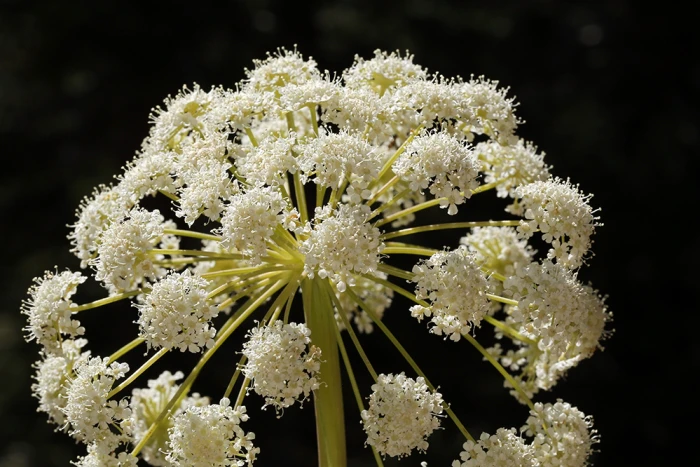Woolly Angelica
(Angelica tomentosa)
Woolly Angelica (Angelica tomentosa)
/
/

© Steve Matson
CC BY 4.0
Image By:
© Steve Matson
Recorded By:
Copyright:
CC BY 4.0
Copyright Notice:
Photo by: © Steve Matson | License Type: CC BY 4.0 | License URL: http://creativecommons.org/licenses/by/4.0/ | Uploader: matsonburger | Publisher: iNaturalist |























Estimated Native Range
Climate Requirements for Gunpo, Korea, Republic Of
| This Plant | Your Site | Plant Suitability for Your Location | ||
|---|---|---|---|---|
| • Precipitation | 12" - 82" | 51" | Aquatic | Aquatic |
| • High Temp. | 68°F - 97°F | 84°F | Your summer temperatures are normal for this plant. | Excellent |
| • Low Temp. | 18°F - 44°F | 19°F | Your winter temperatures are normal for this plant | Excellent |
This plant may not grow well at your location - your precipitation is too high.
Summary
Angelica tomentosa, commonly known as Woolly Angelica, is a taprooted perennial herb that is native to the coastal mountain ranges of California and southern Oregon. It is typically found in open woodlands and forest clearings, often in the understory or along streambanks where the soil remains moist. Woolly Angelica grows 3 to 7 feet tall with large, compound leaves that can be up to a meter long, composed of many lance-shaped to oval leaflets covered in fine hairs, giving them a woolly texture. The plant’s inflorescence is a showy compound umbel with up to 60 rays bearing clusters of small, whitish or yellowish flowers that bloom from late spring to early summer and are attractive to a variety of pollinators.
In cultivation, Woolly Angelica is valued for its architectural foliage and its ability to attract beneficial insects to the garden. It is used in naturalistic plantings, as a border specimen in woodland gardens, and for habitat restoration projects. This species prefers partial shade to full sun, moist, well-drained soils, and can tolerate a range of soil types, including clay. While generally low-maintenance, it may require additional water during dry periods to mimic its natural riparian habitat. There are no major disease or pest issues, but it is important to avoid overly dry conditions which can stress the plant. Woolly Angelica is not known to be invasive and is a beneficial addition to native plant gardens.CC BY-SA 4.0
In cultivation, Woolly Angelica is valued for its architectural foliage and its ability to attract beneficial insects to the garden. It is used in naturalistic plantings, as a border specimen in woodland gardens, and for habitat restoration projects. This species prefers partial shade to full sun, moist, well-drained soils, and can tolerate a range of soil types, including clay. While generally low-maintenance, it may require additional water during dry periods to mimic its natural riparian habitat. There are no major disease or pest issues, but it is important to avoid overly dry conditions which can stress the plant. Woolly Angelica is not known to be invasive and is a beneficial addition to native plant gardens.CC BY-SA 4.0
Plant Description
- Plant Type: Herb
- Height: 3-5 feet
- Width: 2-3 feet
- Growth Rate: Moderate
- Flower Color: White
- Flowering Season: Summer
- Leaf Retention: Semi-deciduous
Growth Requirements
- Sun: Full Sun, Part Shade
- Water: Low, Medium
- Drainage: Fast, Medium
Common Uses
Bee Garden, Butterfly Garden, Low Maintenance
Natural Habitat
Native to open woodlands and forest clearings, often in the understory or along streambanks in the coastal mountain ranges of California and southern Oregon
Other Names
Common Names: Angelica
Scientific Names: Angelica tomentosa, Angelica tomentosa var. elata, Angelica tomentosa var. tomentosa
GBIF Accepted Name: Angelica tomentosa